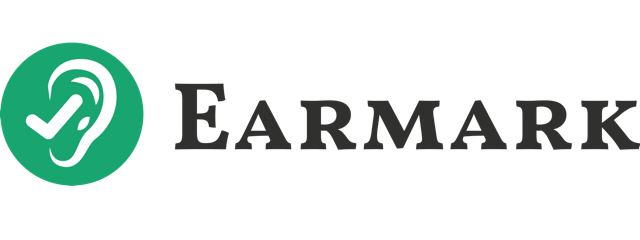If you’ve ever wished you could pull data from multiple accounting, e-commerce, or payment platforms directly into your spreadsheets—no coding required—you’re not alone. In a recent Earmark Expo webinar, Coefficient Co-Founder and CTO, Tommy Tsai, joined hosts Blake Oliver and David Leary to demonstrate how a single tool can connect over 70 systems and automate the workflows that have long plagued accounting professionals.
The Data Fragmentation Dilemma
“We’ve got data in QuickBooks and Xero, data in Stripe, Google App Store, Apple App Store, our CRM, and probably 20 other places I can’t even remember right now.” – David Leary
This quote describes the all-too-familiar reality of data scattered across multiple platforms. Tommy explained that this isn’t a one-off issue: “Everyone has that problem.”
To combat rampant data fragmentation, Coefficient provides direct connections to dozens of platforms—such as QuickBooks, Xero, Stripe, Salesforce, and Shopify—and pulls real-time data into Google Sheets or Excel.
Unlike solutions that rely on Zapier or complex coding, Coefficient’s integrations aim to be user-friendly for accountants and bookkeepers.
Connecting Directly—No More Manual Exports
During the live demo, Tommy showcased how easy it is to import data from QuickBooks into a spreadsheet:
- Choose the “Import” button in the Coefficient sidebar.
- Select a connected QuickBooks account (or any other supported system).
- Preview reports—like Balance Sheets or P&Ls—before importing.
- Set custom date ranges and summarize by month, quarter, or year.
In just a few clicks, the spreadsheet updates with real-time data from QuickBooks. The same approach works for raw transactional data, like invoices, including custom fields. Coefficient also supports multi-client workflows: a single user license can link up to 10 different QuickBooks files on the Pro plan, enabling accountants to handle multiple entities without repeated setup.
Pre-Built Dashboards & Automated Refresh
Tommy unveiled pre-built dashboards for QuickBooks data—think cash flow projections, P&L summaries, even combined views for QuickBooks + Shopify or QuickBooks + Stripe. Once created, these dashboards automatically refresh on the schedule you set—hourly, daily, or weekly.
He emphasized the “build once, set to auto-update every hour, and you pretty much have a live dashboard you don’t have to touch ever again” aspect. No more tedious monthly exports or snapshotting spreadsheets by hand. Coefficient can also create a historical snapshot tab on a schedule (e.g., every Monday morning), allowing you to review changes over time.
Slack Alerts & Email Notifications
Beyond simply pulling data into a spreadsheet, Coefficient also offers powerful automations that notify you—and even your clients—when new data or updates appear. Using triggers, you can configure:
- Slack Alerts: for newly overdue invoices, newly uncategorized expenses, or any row that meets certain criteria.
- Email Alerts: automatically email a copy or summary of a refreshed dashboard to colleagues or clients.
For instance, if a client has overdue invoices, Coefficient can send you a Slack message with the details, along with a link back to the spreadsheet.
Upcoming Feature: Export Data Back to QuickBooks
Although currently live for Salesforce and other systems, exporting data back into QuickBooks is a highly anticipated feature that Tommy says will go live soon. This will allow accountants to correct or categorize large sets of QuickBooks transactions in a spreadsheet—and then sync them back, eliminating tedious one-by-one edits. As Blake put it, this is especially handy for uncategorized transactions or missing classes.
AI in Your Spreadsheet: GPT Copilot
One of the most talked-about features of Coefficient is its built-in GPT Copilot. Tommy explained that you can use ChatGPT’s functionality directly in your spreadsheet formulas—for everything from text transformations to classifying transactions.
Key AI Functions Include:
- GPT Classify – Pass a transaction description and a list of valid labels (e.g., expense categories) to automatically categorize expenses.
- GPT Formula Builder – Simply type what you want in plain English (e.g., “combine text in cells A2 and B2”) and receive a working formula.
- GPT Summarize – Generate narratives or bullet-point analysis of financial data, streamlining basic management reports.
While AI can drastically reduce manual labor, Tommy stressed a “human-in-the-loop” approach: “It’s just as confident when it’s wrong as when it’s right.” In other words, the final review is still up to you, ensuring data integrity and professional judgment remain intact.
Pricing & Special Offers
Coefficient offers both monthly and annual plans on a per-user basis. The Pro plan is $99/month (when paid annually) and includes six data source types plus up to 10 accounts per source. Crucially, your clients do not need a paid license to view or refresh your shared spreadsheets—only the primary user who sets up the automations needs a license.
Special Deal for Accounting Firms:
- Get one license free for a year when using Coefficient’s QuickBooks integration.
- Email team@coefficient.io to claim this offer.
Coefficient also runs a referral program: refer a client who purchases their own license, and receive 20% of the first year’s subscription in return.
Conclusion: A New Era of Automated Accounting Dashboards
In an industry where spreadsheets remain the go-to analysis tool, Coefficient bridges the gap between multiple data systems and your workbook. From multi-source dashboards to AI-driven classification and Slack alerts, it merges modern automation with the familiarity of Excel or Google Sheets.
Watch the full Earmark Expo to dive deeper into these capabilities, see a live demo of Coefficient, and learn how you can integrate it into your own workflows. To explore Coefficient and claim your free license for QuickBooks integrations, reach out to team@coefficient.io. You’ll soon be wondering how you ever navigated the scattered-data landscape without it.
